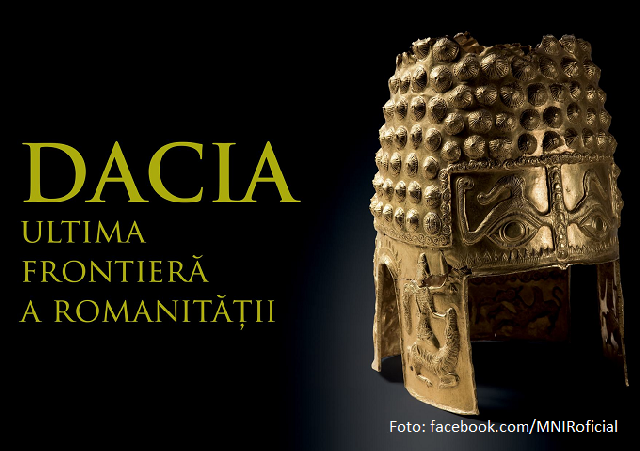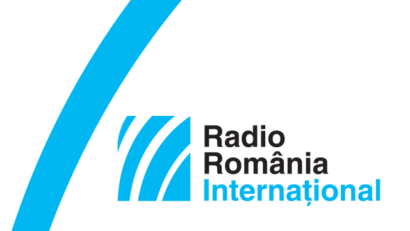Limes dacicus
The frontiers are physical or
mental limits people have set for themselves, by their own free will or which
nature raised, to withstand people’s expansion bouts. Technically, archaeologists
labelled the oldest frontier in the Romanian space using the phrase limes dacicus.
It runs in the western half of Romania’s territory, along a distance of 1,000 kilometers. It is
the frontier that Rome, conquering Dacia, traced, also physically, and which
stood the test of time, even to this day.

Steliu Lambru, 17.02.2023, 16:44
The frontiers are physical or
mental limits people have set for themselves, by their own free will or which
nature raised, to withstand people’s expansion bouts. Technically, archaeologists
labelled the oldest frontier in the Romanian space using the phrase limes dacicus.
It runs in the western half of Romania’s territory, along a distance of 1,000 kilometers. It is
the frontier that Rome, conquering Dacia, traced, also physically, and which
stood the test of time, even to this day.
Ovidiu Țentea is a historian and an
archaeologist with Romania’s National History Museum and with him, we made our
attempt to retrace the direction of that limit of the ancient world.
The
phrase limes dacicus encapsulates the frontiers of the Roman province Dacia,
the province which, during Emperor Trajan’s reign, was embedded into the Roman Empire
for 160 years. The limits are physical but also administrative, for a province that
was part of the Roman Empire. Physically, we’re speaking about the limits made
of what has survived on the ground,
traces of the frontiers, more or less visible. It is an extremely diverse and complex
frontier, the most complex frontier that has been documented for the Roman Empire which exists on the territory of a state, but also the longest one. On the
other hand, it is an administrative limit, since the Romans, well, it’s simply
pointless for us to cling to the Latin word limes, back then hey did not believe their
Empire had any ending or any limitation on the ground. It is a materialization,
if you will, a tactical and a military one, in certain areas, being more of a mental
frontier, material evidence of the then concluded agreements. All agreements
they had with their neighbours had to be materialized on the ground through a
frontier, through what today is, let’s just say, a ploughed strip of land.
With the map of Romania in hand,
and heading from the west to the east, clock-wise, we tried to mark the most important
points of the limes. Ovidiu Tentea:
There are two defence lines that were
operational in different timeframes. We have the inclusion of the Apuseni Mountains
and of the gold mining areas, on the ground we’re quite familiar with the legionnaire
castra of Apulum (Alba Iulia) and
Potaissa (Turda), yet their emergence was tardier. The frontier was materialized somewhere further to the
west, the data we have about that are not quite clear. Then it crosses the
counties of Cluj and Salaj, through the area of the Meses Gate, where it is
better known and here we are, on the inner area of the Carpathian Arc, towards
the north. We’re now eastward bound, we cross the mountains through the Rucăr-Bran corridor and we’re hitting the course of
the Danube, along a route which has been more or less materialized on the
ground, on the territory of today’s Arges and Teleorman counties. Here we have
the cross-alutan line, the so-called limes transalutanus, which ran concurrently,
or in different timeframes, with the line of the Olt river.
But how was a ground frontier materialized,
which was so long? Ovidiu Țentea:
In antiquity, the frontiers were rather routes the
army was marching along. According to the enemy or the climate conditions, or
even in keeping with the political circumstances, if you will, they were materialized
on the ground, or not. For instance, in
Banat, we have two roads with no fortifications proper, yet we have two lines
of fortifications, which point to certain moments: to Trajan or Hadrian’s
reigns, to Antoninus Pius’s reign. Then there is the late 2nd
century, the crisis of the 3rd, therefore the frontier changes, being well
or less well-known. The most spectacular part of that segment can be found in
north-western Transylvania, in the Cluj-Sălaj-Bistrița
area, where very many towers are materialized, networks of towers defending certain
areas, where the troops were stationed, in fortifications. Signalling rules were very well-known, the earth walls,
the fortified moats. The system was very complex, and also very well
documented.
The observation of the limes dacicus reveals the
dynamics of a certain organization pattern, also telling us the existing limit
was not set once and for all. Ovidiu
Țentea:
As we’re heading towards the north east and east the traces are not that
well documented, but they close the Carpathian Arc on the inside, then, via the
Southern Carpathian gorges, the connection was provided with the alutanian and
the cross-alutanian line, respectively, so the frontier could be closed to the
east. Of course, there were enough troops, at least in the first half of the 2nd
century and until the crisis caused by the Marcomannic wars, when troops decreased
in numbers and large-scale operations were unfolding, so we get to know the major
wars of that time. After that, historical sources do not materialize them anymore,
but we do know that in time, the number of troops decreased, which happened all
throughout the empire, so we can only discuss that episodically. Early into the
2nd century, there is the first organization, during Trajan’s reign,
when the administrative aspect of that is rather less conspicuous, it is more
like a military matter, it is a military district. After the first conflict of
117-118 AD, Hadrian is the first to organize that space administratively,
naming it Dacia Superior, Dacia Inferior and subsequently, Dacia Porolisensis. So there were three provinces, with
three governors. Which were reorganized, after Marcus Aurelius.
Limes dacicus was the first civilization frontier of the Romanian space.
Now it has become part of the universal heritage. (EN)





























